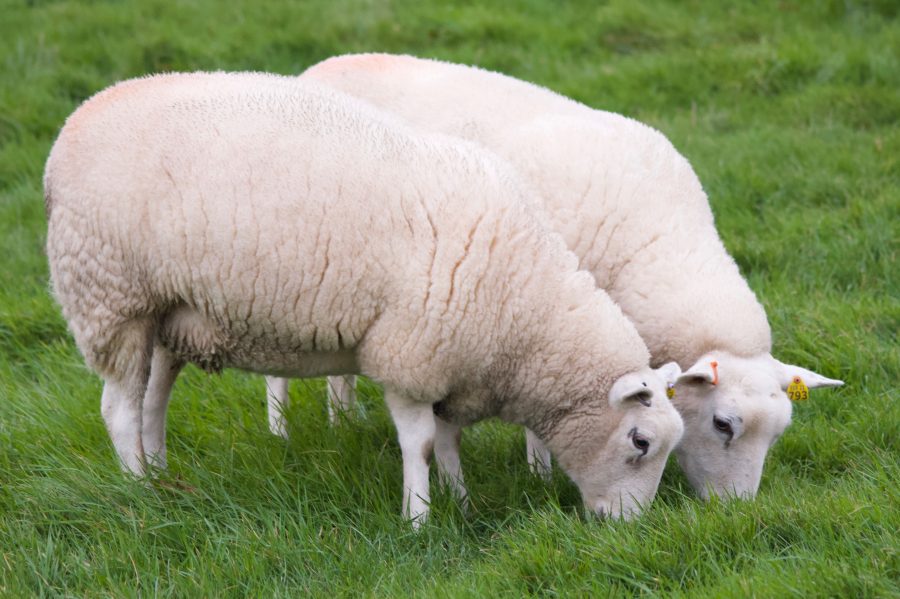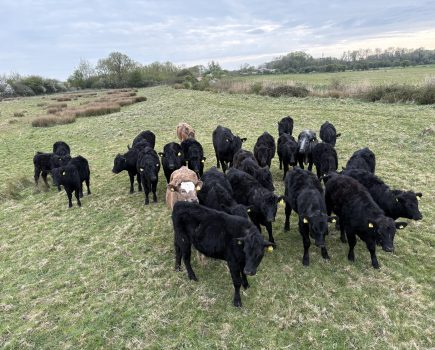Coming into the second week of February I am struggling to see just where the first month of 2024 has gone, and it only seems a short time since the new year. People say it’s a sign of advancing years, but there are plenty of others, considerably younger than I, who seem to hold to the same view.
At the time of writing, lambing is due to start in a little over four weeks, a time scale which, at the current rate of progress, will disappear very quickly, so I am determined to get everything in place ahead of schedule just to avoid any last-minute hiccups. The ewes have been home for a little over a week now, and are looking remarkably well, although I really shouldn’t be over optimistic, a route that, all too frequently, ends in disappointment.
In being able to get them away for a while I have, fortunately, been able to build up a decent, but not excessive, wedge of grass in front of them for lambing and post lambing grazing. I had a decent wedge before they went away, rather too proud, and I was somewhat concerned that if we got some hard weather it would get burnt off, so I took the risk and ran the ewes over it. This time it has, somewhat fortuitously, worked to my advantage. The grass emerged from the cold spell a couple of weeks ago relatively unscathed; the cold checked growth but the subsequent warmer weather has seen it starting to grow away again, whereas colleagues who had a lot more grass have seen it burn off in the frosts and turn to mush.
Since the the girls returned home I have introduced a bit of hard feed, for a number of reasons; although they have ample grass in front of them, as permanent pasture I’m not sure of the feed value, plus a little bit of extra dry matter will just reduce grass consumption a bit and, with the risk of more cold weather forecast, help stretch grazing a little. Most importantly, it will put some quality nutrients into lamb growth at a critical time and later into milk production. It’s a considered and strategic approach; I know that having at least introduced some concentrates the rumen is beginning to transition to deal with a different feed, and should I need, in the event of some hard weather, for example, to up the feeding a little it will not generate any issues for the pre-conditioned rumen.
The ewes have certainly welcomed that bit extra. It’s remarkable how, once they have experienced some hard feed, they never forget the rattle of a feedbag; even though they returned to a paddock with plenty of good(ish) grass and were all contentedly laying down the following morning, at the sight of a feed bag they were all at the gate waiting to be fed.
I almost always ground feed my ewes. They don’t seem to waste any even in some fairly dreadful weather in the past; there will always be the odd ewe determined to extract the last bit of feed from the grass or mud, and it works well for me. Rather than linear I feed in a large circle which tends to stop a bit of the rushing backwards and forwards quite so much, with small drops of feed each about four metres apart (the length of two ewes back to back) allowing access all around each drop without trampling.
With a significantly reduced flock these days it is good to have a bit of time to observe sheep behaviour. It is interesting to see differing reactions to feeding; some will pick a feed drop and largely stay with it, while others are determined to follow the bag around the circle, grabbing a little from each drop as they go. You get to recognise the latter fairly quickly, the same faces following the bag not just from day to day but from year to year. Some can be a real pain; the only problem is, as years go by, being able to stay in front of these trouble makers while feeding seems to become a little more challenging each season.
No matter how smoothly things are proceeding currently, as the start of lambing rapidly approaches it is rather too easy for a degree of apprehension to creep in. Although I am not much given to worrying about things that are beyond my immediate control, it is difficult not to feel a slight sense of unease until the first few litters of lambs hit the ground; it is only then that there is any reassurance, assuming that they are good strong lambs with good milky mums, that all of the care, feeding and preparation over the preceding couple of months has produced the desired outcome.
It is a situation that has been made somewhat worse this year by the fact that we have both Bluetongue and Schmallenberg hovering in the background like the sword of Damocles. Lambing is for me and for many one of those things in life that is eagerly, if apprehensively, looked forward to, but once commenced its end is regarded just as enthusiastically; having had a nice tight tupping last autumn I am hoping that the gap between start and finish will be relatively short. Only then is it possible to relax, just a little.
It is important that we all remember just how stressful a time lambing can be, particularly if for some reason things start to go awry. It is a time not necessarily of hard physical effort but of long hours, and can be quite draining both physically and emotionally. It is a time to give a little bit of thought to others; a quick ‘phone call can make a lot of difference if someone is struggling a bit.
While in the thick of it, particularly after a bad day, it is easy for small problems to assume huge proportions; a quick call and the ability to share problems can suddenly put things into a rather more meaningful context – so phone a friend!
Pictured: A contented pair of ewes, half-sisters, a shearling and a two shear. Out of the same mum, different sires, but almost always seen grazing together; a family bond or simply coincidence?







